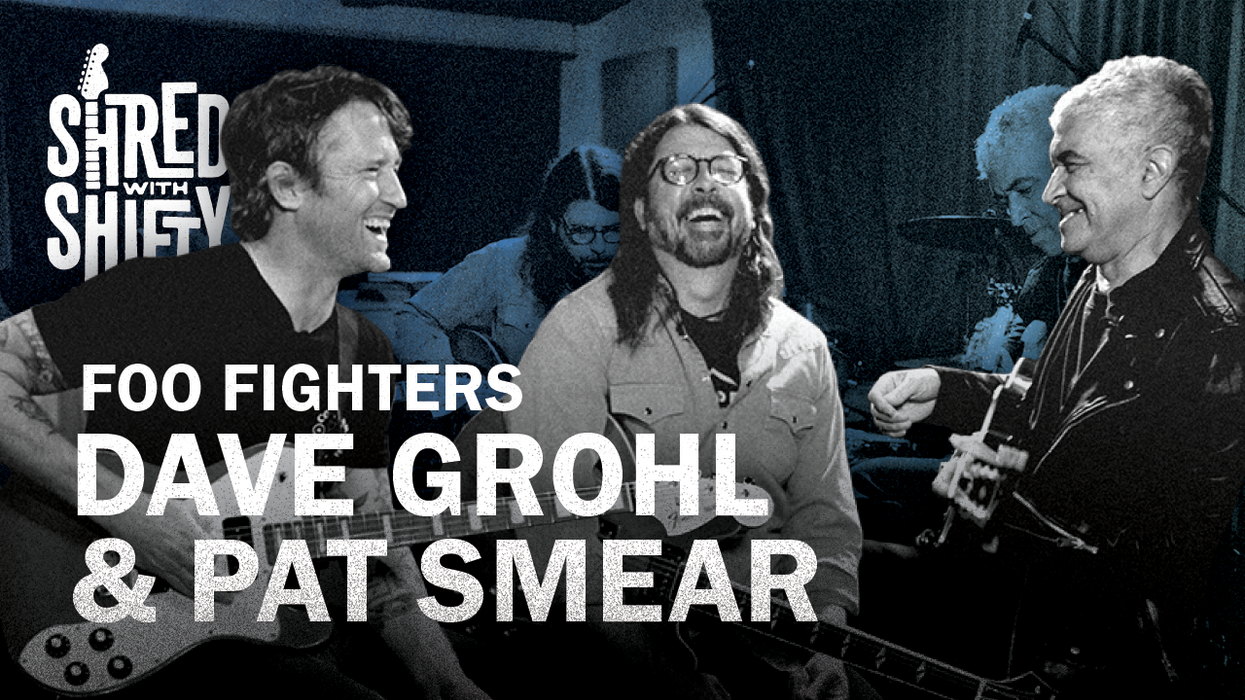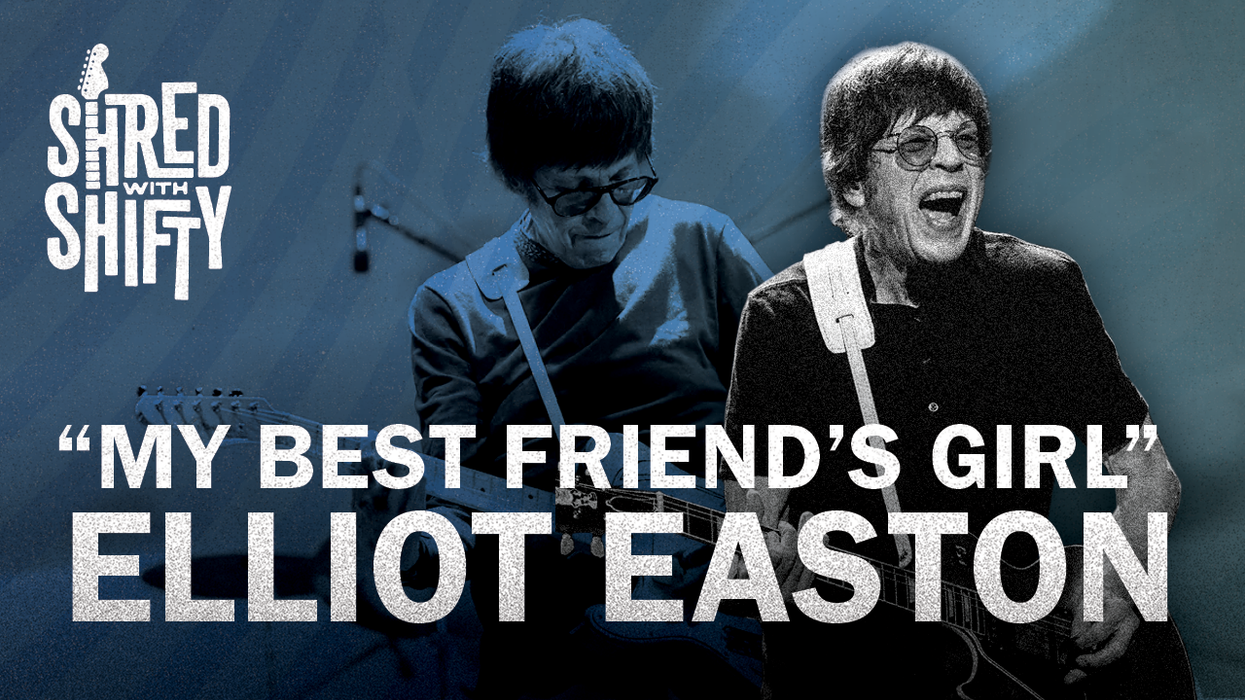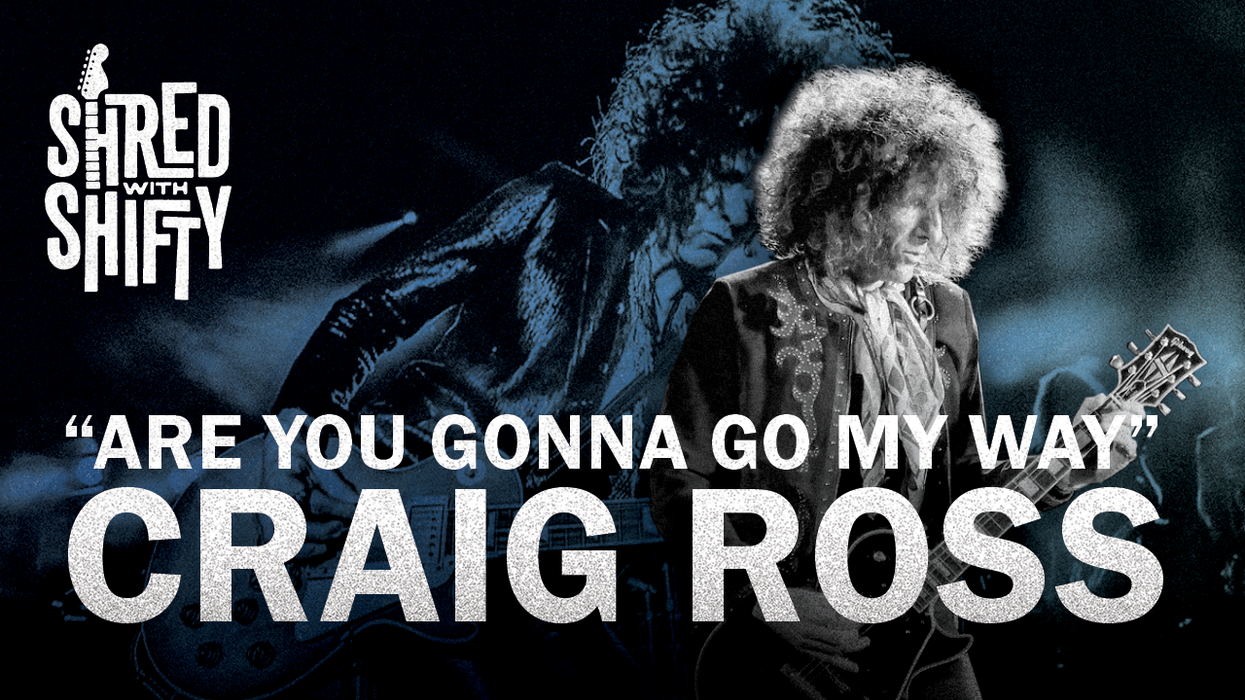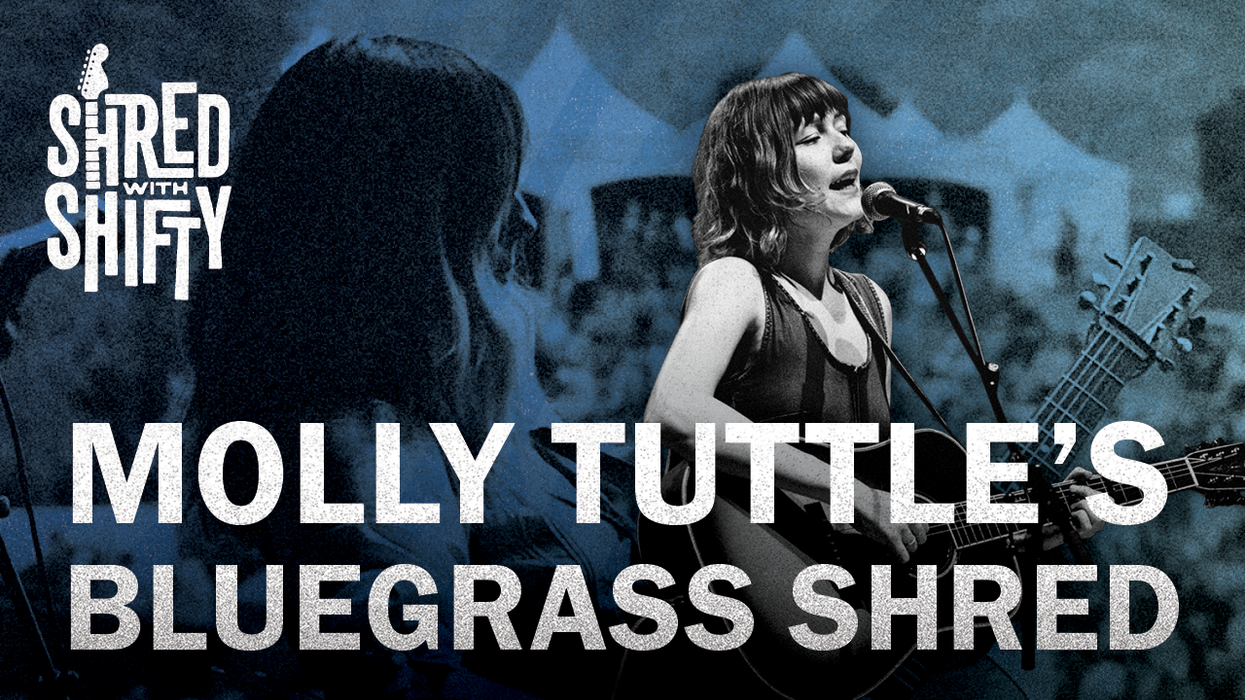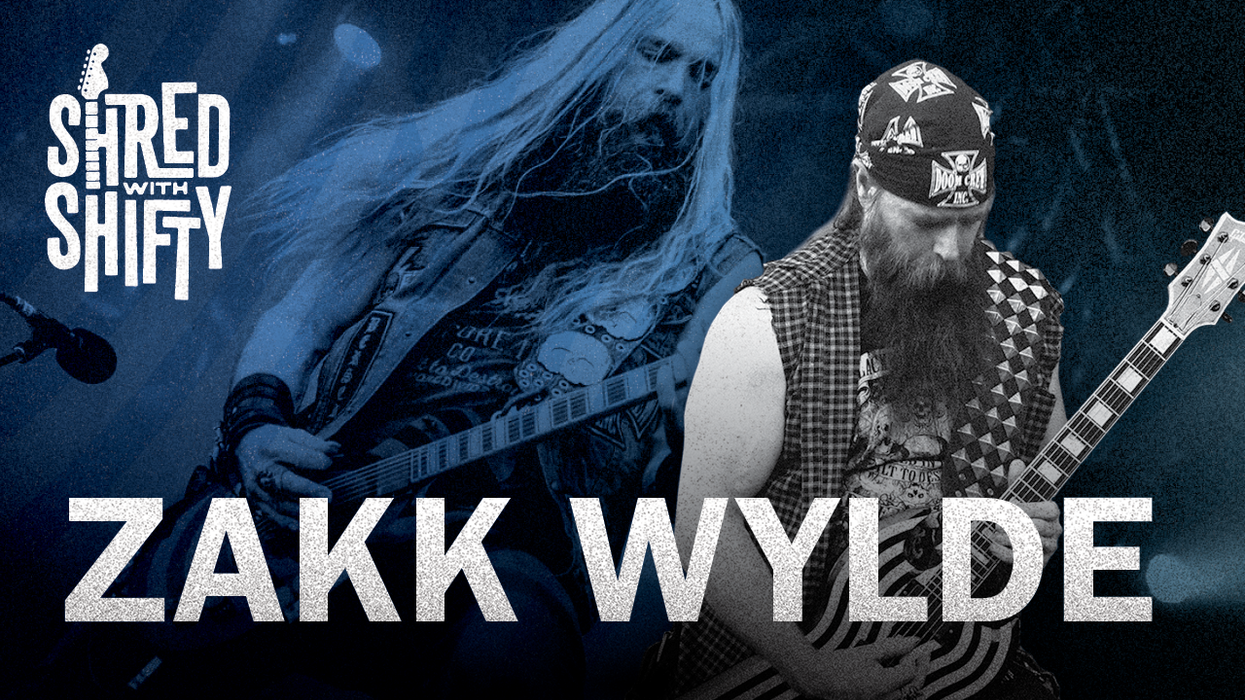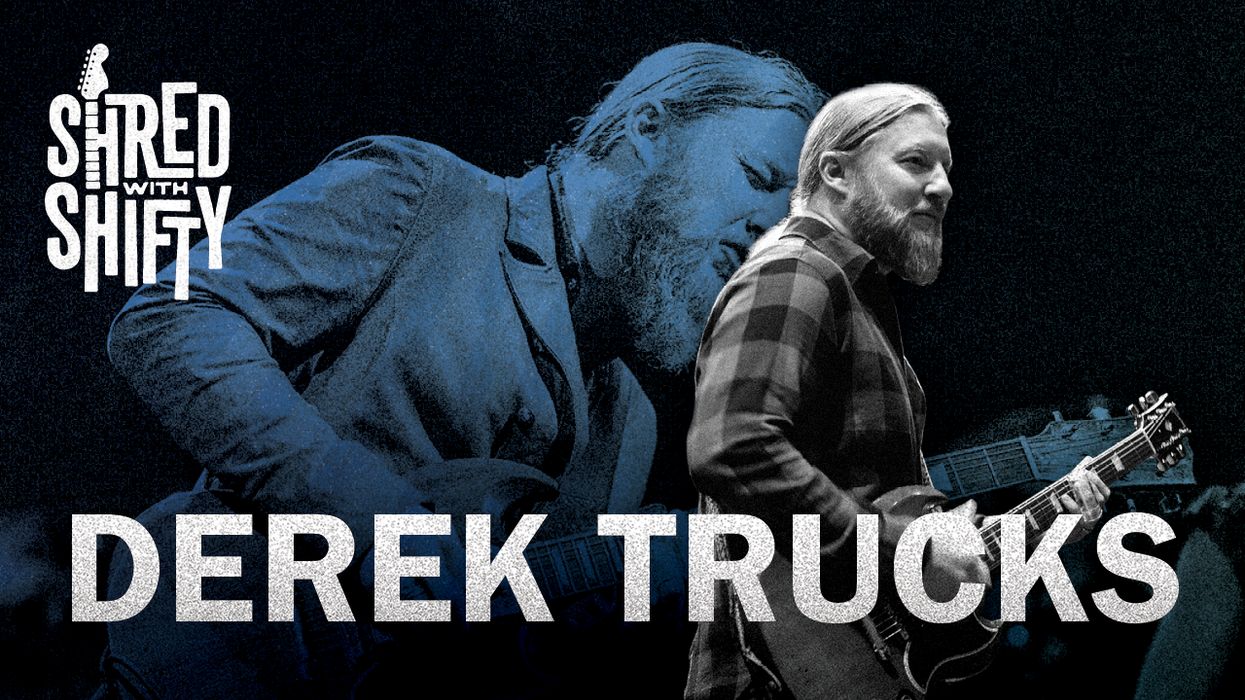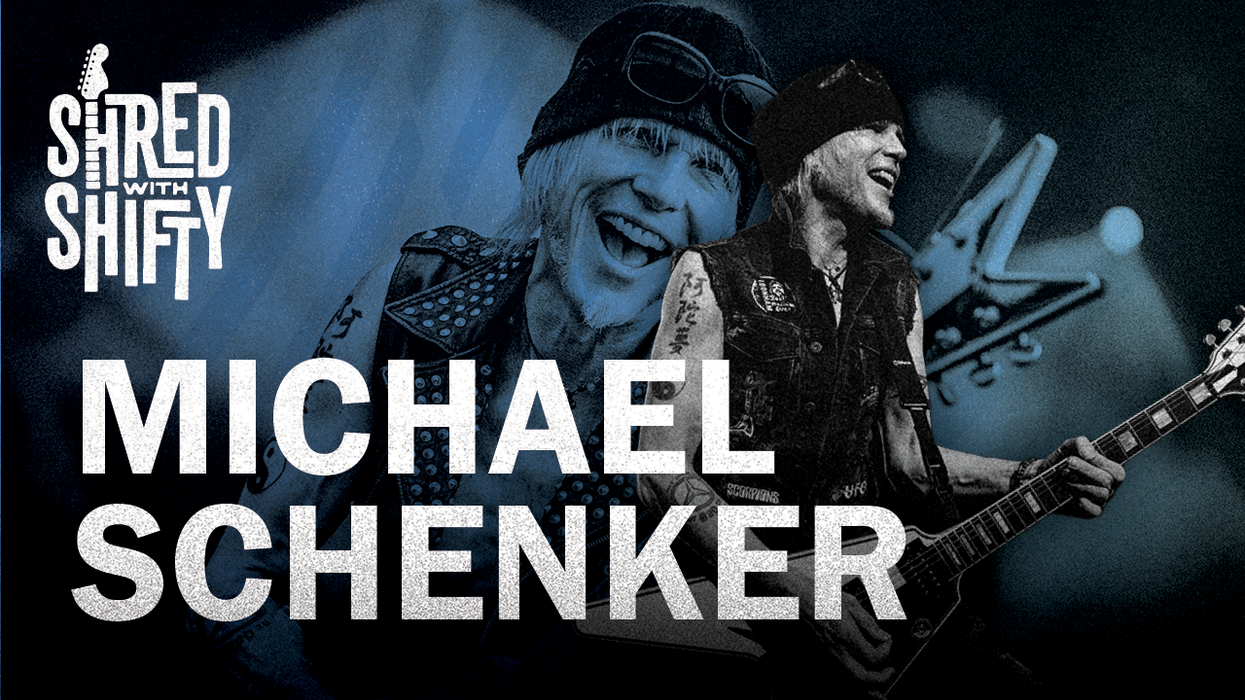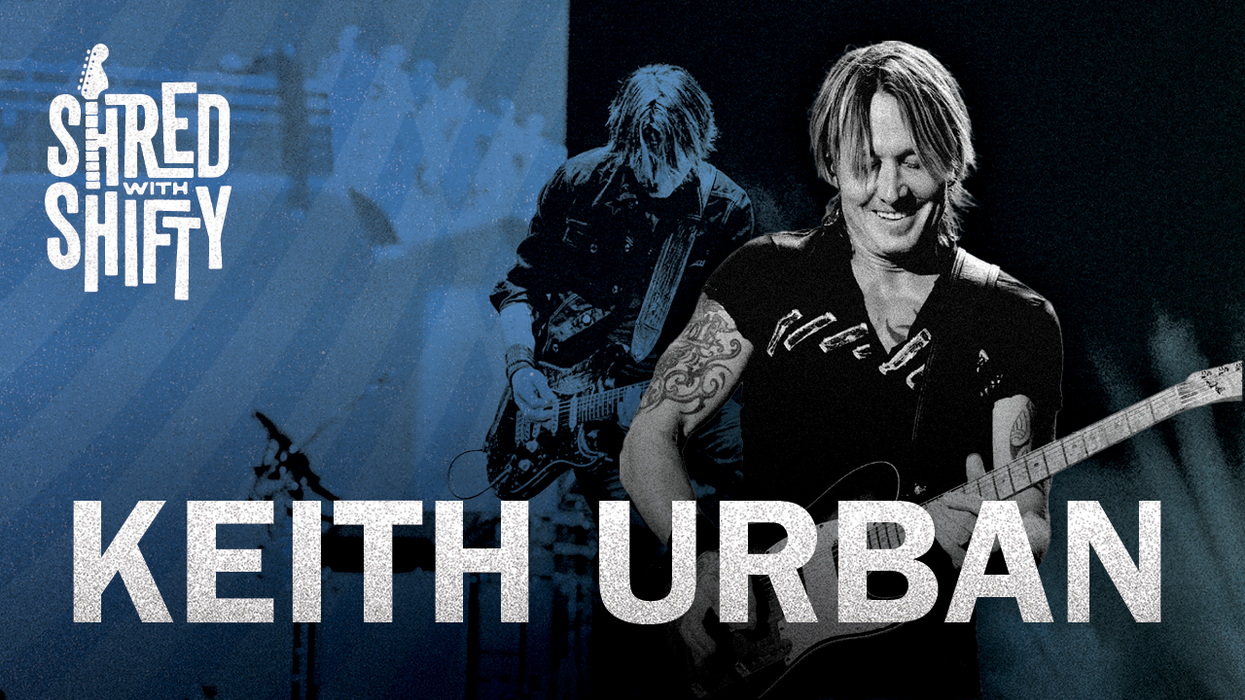Over the past 30 years, Foo Fighters have become one of the most influential and important bands in rock and roll. Through countless gigs from clubs and theaters to arenas and stadiums, the trio of Dave Grohl, Pat Smear, and Chris Shiflett have developed a vocabulary that at this point comes together naturally. It’s a shared language that is always present but rarely (if ever) discussed. Until now.
Back in February, the trio convened in Studio 607 for a sitdown that is destined to be an instant classic among Shred with Shifty diehards. Below are a few excerpts from the conversation—edited for clarity—that hit on what first inspired Dave and Pat to pick up a guitar, why there was so much feedback at Germs gigs, and that one time they ran into Joe Bonamassa at Guitar Center. You can watch the full episode on YouTube, where they break down “Hey, Johnny Park!,” “La Dee Da,” “Rope,” and so much more. — Jason Shadrick
Chris Shiflett: Alrighty, fellas, let's jump into it. You're in the hot seat now.
Dave Grohl: Oh God. Here we go.
Shiflett: Let's start off easy. What are you playing today?
Grohl: This is my signature DG-335 Epiphone and it's fucking rad. Love it. Been playing it on tour.
Pat Smear: It's not even out.
Dave: Is it not out yet?
Smear: No. Only rumors.
Shiflett: For the sake of this interview, it might be out by the time this airs, so we could be in a time machine. Pat, how did you go from being a guy who famously borrowed guitars at Germs gigs, didn't own one of your own, to the man we see here today with a barn full of guitars?
Smear: That's why, because I didn't even have my own guitar, so I'm like, well, now I need two.
Shiflett: … hundred … thousand. [laughs]. What are you playing today?
Smear: I am playing prototype number one, made by Mike McGuire from the Gibson Custom Shop. It's a Mini Barney Kessel Triburst prototype from 2011. May 11th, 2011.
Shiflett: Do you also have a baritone back there?
Smear: I do. My Hagstrom baritones are on tour, so that's my SG baritone. It's a funny guitar. I'm told that it was originally going to be a Buckethead model, his new model, and he just disappeared. So, they put it out as a baritone.
Grohl: He flew the coop?
Shiflett: When you first came back to the Foos, why did you land on a baritone so much of the time? Had you played much baritone prior to that?
Smear: I played one a little bit. I played one on The Color and the Shape album. That sounded great, but I never played it live. But then, what am I going to do? There are already two guitar players. When we were doing Wasting Light, I'm like, “What am I going to fit in here? Well, nobody's playing baritone. I'll pull that out.”
Grohl: And that’s the story of the Foo Fighters. [laughs]
Shiflett: What made you guys want to be guitar players in the first place? Because probably a lot of people don't know that the guitar actually came before drums, right?
Grohl: Yeah. My father was a classically trained flautist, and my mother bought him a nylon-string, which I don't think he ever played, but it sat in the corner of the room like a piece of furniture, and by the time I got to it I was maybe like eight or nine years old and it maybe had two or three strings on it. I picked it up and played “Smoke on the Water” or something like that. I understood where to put my hands on the frets, and then I was like, “wow, this is cool.”
Shiflett: Did you ever take lessons?
Grohl: I took a few lessons when I first started playing, and I was disappointed because I wanted to learn how to play chords so I could play along to things. I could hear the songs and sort of figure them out, but I was stuck with just getting my little-kid stuff together. And then the teacher started to try to teach me classical. I remember he taught me this thing. [plays short classical piece].
Smear: It worked! It's still there.
Grohl: I was like, fuck that shit.
“I don't even know what a good guitar sound is, but I do know when I play an old Trini through the Tone Master, I really have control over what I'm doing.” — Dave Grohl
Shiflett: What about you, Pat? What made you want to be a guitar player?
Smear: It was my sister Ingrid, who is a couple of years older. She had a nylon-string acoustic guitar in the house. I had those forced piano lessons when I was a kid, and I would cry through the whole thing. I hated it so much, and then I picked up the guitar and I'm like, “Oh, well, that's my thing.” But it was really [Alice Cooper’s] Love it to Death. That picture on the back cover. I'm like, I want to do this. I want to play that.
Shiflett: It's funny how that still informs your guitar choices. Who would you consider your primary guitar influences?
Grohl: I really liked Ace Frehley. I mean, I had a Beatles chord book, and that's where I was learning to play chords and stuff, but I never saw footage of the Beatles playing when I was eight or nine. I just thought Ace was so fucking cool looking, and I loved the way he stood, and I loved his Les Paul, and I thought that I could be a guitarist and look like him without all the fucking heels and the makeup and shit.
Smear: I don't know that I had one. I had a bunch. I had all the usual ones, but I thought Mick Ronson was the coolest, but as far as the playing, it was the Alice Cooper guys.
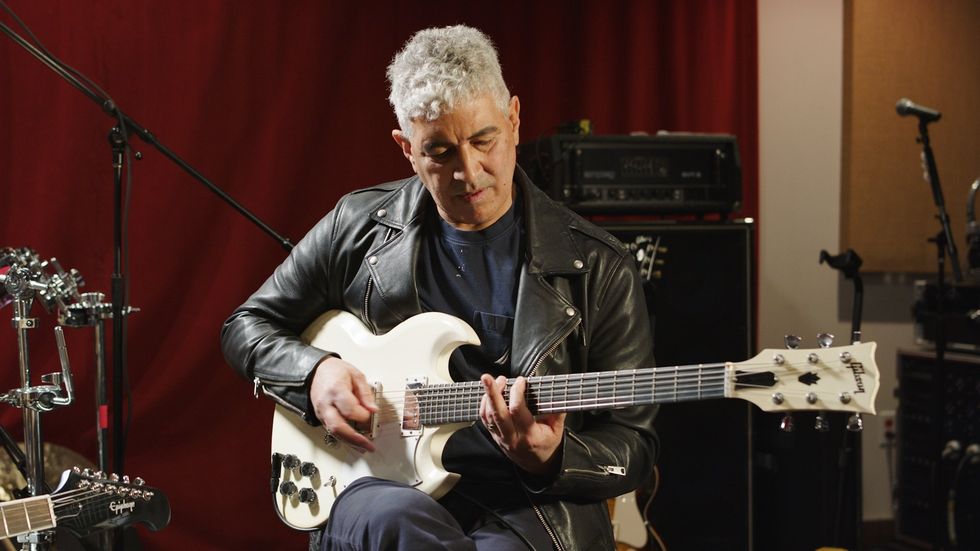
It wasn’t until the band started recording Wasting Light, that Pat Smear dived into the baritone guitar. “What am I going to fit in here?” thought Smear. “Well, nobody's playing baritone. I'll pull that out.”
Shiflett: When did you figure out that you needed a certain kind of gear to make it sound like the record?
Dave: It's funny. My mother bought me a Silvertone, like an old one from Sears with an amp in the case and everything, and it was cool. But then I found out about a distortion pedal. I don't know how, but I think I was in a music store and I saw one, and I said to my mom, I was like, “oh my God, mom, can I get it?” It was 30 bucks. It was an MXR. And I was like, “This is going to make it sound so much better.” And she's like, “Oh, good.” And we buy it and bring it home. After I plugged it in, she was like, “I thought you said it was going to make it sound good!”
Shiflett: It's distorting the sound. [Laughs]
Dave: Yeah, it doesn't sound good.
Shiflett: I had a little solid-state practice amp, and I'd go home and I'd try to play whatever I learned in my lesson and it wouldn't grit up at all. And you'd just kind of be confused. Why doesn't this sound like the Ozzy record? It doesn’t sound right!
Smear: I know! I never knew anything about that part of it.
Grohl: Well, you didn't even have any fucking gear. [Laughs]
Smear: I didn't even have gear. I didn't have a guitar. I didn't have an amp.
Shiflett: What was the time that you showed up at a Germs show and had to borrow somebody else's gear?
Smear: Well, that happened all the time, but the worst one was we were playing with X and I broke my guitar in the first song, and so I'm like, “I need Billy Zoom's guitar!” And, dude, I found out he was hiding in some closet with his guitar saying, “Keep him away from my fucking guitar.” I'm all drunk. I think somebody just taped it back together and we were okay.
Grohl: Is this why there was always so much fucking feedback at Germs gigs? You had no pedals, you would just crank the amp?
Smear: Well, if there was a pedal, I would just step on it and leave it there. And my favorite when I hear old tapes is tuning full volume with the pedal on.
Shiflett: Well, let's talk a little bit about your live rigs that you've gotten nowadays and how that's kind of changed over the years.
Smear: Yeah, Dave, talk about your live rig. [Laughs]
Grohl: Okay, just a disclaimer. I don't know a fucking thing. At first I was playing a Marshall, it was like a JCM 900 or something like that. For the first [Foo Fighters] album, that's what I was playing.
Shiflett: Pedals? No pedals?
Grohl: I really think I only had a RAT pedal and a fucking tuner. I don't think I had any delays or phasers or anything yet. I think I just had a RAT. Then eventually the Mesa/Boogies came along and it was like Dual Rectifiers and 4x12s and that kind of stuff. And then eventually I found one of those [Fender] Tone Masters at Norman’s [Rare Guitars]. And he was like, “These are great, man. This is what Aerosmith used on all of their cool shit.” I've stuck with them ever since. And the thing is that, I mean, I don't even know what a good guitar sound is, but I do know when I play an old Trini through that, I really have control over what I'm doing. I don't have any volume pedals or anything like that. I've got four channels of clean to dirty.
Shiflett: You do have a pretty straightforward live set up. Not a ton of pedals, just phaser and delay and a couple of things.
Grohl: And I can roll [the volume knob] a lot. I mean, that's the thing with the Trini is that they're kind of reactive. They're dynamic and you can make them do …
Shiflett: It leaves a lot in your hands.
Grohl: It does. And especially when you're running around the stage and I don't have 20 seconds to get back to a pedalboard, then I could just roll up and down and just do it in the hands.
“But it was really [Alice Cooper’s] Love it to Death. That picture on the back cover. I'm like, I want to do this. I want to play that.” — Pat Smear
Shiflett: It's interesting. When I joined the band I was playing through a Dual Rectifier and I think you were playing through a Dual Rectifier live, but I was surprised to learn that for Nothing Left to Lose you had used the Trini and old vintage AC-30s and Memory Man, and Hiwatts, so your studio thing and your live thing were very different.
Grohl: I remember having that conversation with my guitar tech at the time, and the justification was basically, if one of those things goes down while we're on the road, we're kind of screwed. And so the Rectifiers were really consistent and you didn't have a lot of problems with them, and if you needed to find another one, they were easy to find.
Smear: And they'd send them like that. [snaps fingers]
Grohl: Yeah, they'd be really quick. And we were just doing that because we were blazing through gigs so much.
Shiflett: I don't remember which tour cycle it was, but there was just a point where when you got that Tone Master and I came in with a Friedman and a something else or an AC, I forget what it was, all of a sudden it went from that to this completely other tone thing live.
Smear: We all had the Mesas.
Grohl: I think we had gotten to the point where we all had sort of three different sounds and three different duties in the band, and so we all started to focus more on that.
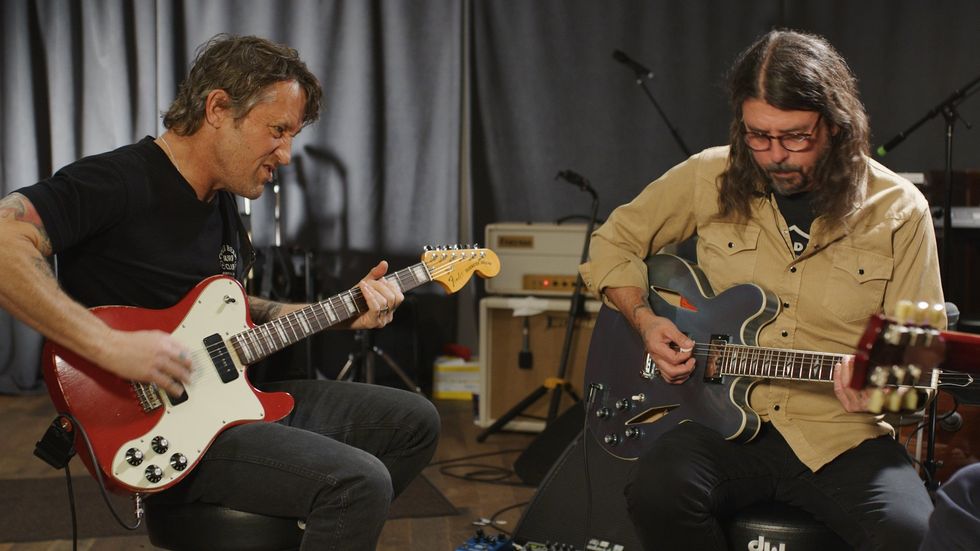
Both Grohl and Shiflett are armed with their respective signature guitars. Grohl’s recently released Epiphone DG-335 has been long requested by fans, while Shiflett’s Tele Deluxe will soon get a refresh.
Shiflett: I never had any effect pedals until I joined the band. Can you believe that?
Grohl: Wow.
Shiflett: Never, never played with a delay pedal or a flanger or any of that stuff in my life. And when we first started doing those rehearsals and there were songs like “Aurora” and “Generator” and stuff that had some color, that was when I had to first learn how to do that.
Grohl: I think that a lot of what we do comes from the studio. When we go in to record songs, the basic idea is usually pretty simple and we'll pull that together and then we start to color it with different things, different sections of the song, different effects, different tones, and things like that. And also the arrangement or composition of the three of us doing what we do since we don't want to just do the same thing all the time. I think it took 15 or 20 years for us to figure out the recipe or combination of what we do.
Shiflett: I wanted to talk to you about, “Hey, Johnny Park!” I remember when I bought that record, putting that song on and the big drums came in and then the guitars kicked in, it's like a guitar solo and there wasn't a lot of that in your music, and there really wasn't a lot of that even in alternative rock at that time. I was listening to the recorded version last night and it sounds like maybe it's like a Big Muff or something in that part? Do you remember what guitars you were playing? What amps, pedals, all that sort of stuff?
Grohl: I'm sure on that I was playing through a combination of amps. I think one was old Marshall. I think another might've been a Hiwatt. I don't remember what we had in there.
Smear: The only amp I remember was when you used that smokey cigarette amp. I don't even remember what song it was. But you used that on something.
Shiflett: What was your main go-to guitar back then?
Grohl: I was using the Trini a lot.
Shiflett: Oh, you had it even back then?
Grohl: Yeah, I got the Trini before Foo Fighters. I got it at this place called Southworth Guitars in Bethesda, Maryland, and there was a row of 335s and they're all red. They all kind of looked the same. And then there was this one with this different headstock and it had these diamond f-holes. I knew nothing about it. I didn't know anything about Trini Lopez. And it turned out great. It's the same one that I've used on fucking everything.
Shiflett: How many Trinis do you have? Vintage old ones?
Grohl: Maybe like five or six of them.
Shiflett: I didn't know if you were the Joe Bonamassa of Trinis.
Grohl: No, I’m not the Joe Bonamassa of anything.
Shiflett: I bet Joe Bonamassa is probably the Joe Bonamassa of Trinis. [Laughs.] That reminds me. My favorite guitar shopping moment with Pat was when we were making the last album and we were sitting there and we ran over to the rock and roll Guitar Center, and we went into the vintage room and we're looking at guitars.
Smear: Was Bonamassa there taking apart a Strat?
Shiflett: Yes, but the part that always sticks in my head is there was a 1997 Les Paul and they called it “vintage.” I was like, what? Really? God, how fucking vintage are we? [Laughs.]
Grohl: I just think we’re “used.”